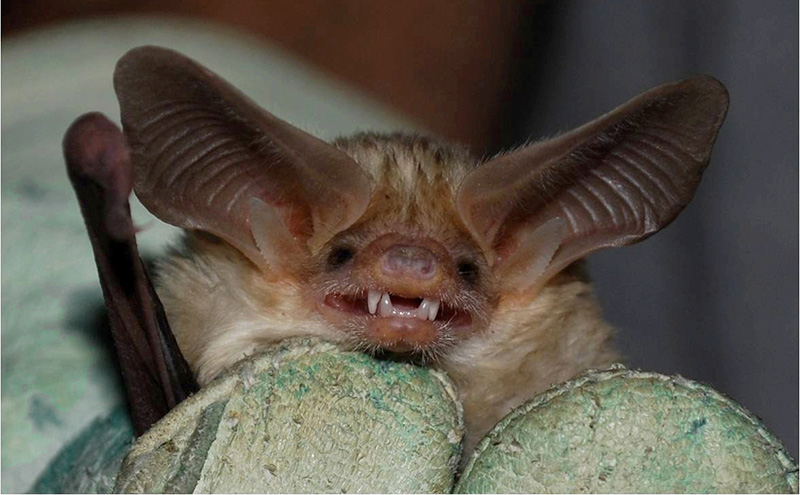5 Things You Didn’t Know About Bats
By: Bailey Knotts & Ross A. Whitley
10/22/2021

A Townsend Big Earred Bat smiles at the camera.
October: the month of cool autumn air and horror movies.
Fall time may conjure visions of ghosts, goblins, and other monsters; but, some of these frightful creatures have received a bad rap. Bats, our only flying mammal, are often misunderstood, which is why the last week of October is always dedicated to celebrating this unique mammal.
In OSMRE, we are committed to ensuring the protection of bats and their critical habitats. In the spirit of celebrating Bat Week, here are a few facts about our bug-eating friends that you may not know!
To learn more about these fun facts, make sure to listen to our latest YouTube interview with Craig Walker, our resident Bat Expert. You can listen to the interview here: https://youtu.be/UVABY-z4ofM
-
DON’T TOUCH BATS
A common misconception is that bats live in caves.
In actuality, bats found in caves or abandoned mines are most likely just hibernating. During this state, called torpor, their metabolism slows down. Being disturbed can prove deadly for bats. By touching or making loud noises around bats in torpor, this can trigger a physiological response that forces them to use all of their fat reserves...and thus not being able to survive the duration of the winter.
-
BAT GATES
Bats are their most vulnerable during hibernation. And since large colonies of bats tend to hibernate together, a single disruption can result in devastating loses. Keeping human elements out of bat habitats like mines or abandoned caves is critical to preserving bat populations.
Bat Gates are used for this purpose. They allow bats to enter these spaces without allowing humans beings to enter. So, if you see a bat gate in place, don’t try to break in!
-
BATS NEED OUR HELP
Since the winter of 2007-2008, millions of bats have died from White Nose Syndrome and it is still impacting populations across the country.
White Nose has killed 90% of three North American species. The name comes from Pseudogymnoascus destructans, which infects skin of the muzzle, ears, and wings. While the fungus is believed to be spread from bat to bat, it is also likely that people visiting different caves and abandoned mines can transmit the disease.
-
TAKE A SHOT FOR THE BATS
Bats are an integral part of the ecosystem as they are the primary pollinator for many plants. For example, if it wasn’t for bats, then we probably wouldn’t have tequila...
The primary pollinator of the Agave plant are bat species. And so without bats then no agave; no agave means no tequila.
In addition to pollinating plants, bats are a great active pesticide system. They eat pests and keep farms healthy, providing us with fresh fruits and vegetables across the country. Check out this colony that eats over 100 tons of insects every night!
-
SOME MINE SHAFTS MAKE GREAT HABITATS
OSMRE works to make sure that new and abandoned mine sites are reclaimed to ensure that it is habitable for bats.
Only 5% of of all U.S. caves have the proper environment to house bats, meaning abandoned mines can provide excellent habitats. Bats are attracted to mines because they mimic the safety and unique conditions of cave environments.
Another great way to help bats is to provide spaces for bats to roost. And even you can assist in doing this! Learn how you can install bat boxes somewhere on your property.
-
INTERESTED IN LEARNING MORE?
Make sure to check out our interview with Craig Walker, who has served as an ecologist for OSMRE for over 18 years. He is one of our resident Bat Experts and shares some more fun facts about bats and how we can protect this important species.
Find the interview on YouTube here: https://youtu.be/UVABY-z4ofM

